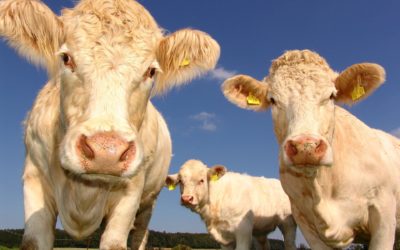Canada Organic Trade Association’s latest report shows continued growth of Prairie organic acreage and operations in 2018. This is the fifth report on Prairie organic operations and acreage published by the Canada Organic Trade Association (COTA) and commissioned by the Prairie Organic Grain Initiative.
“The Organic Agriculture in the Prairies 2018 Data Report is one of the Prairie Organic Grain Initiative’s most important outcomes. The report has provided up to date acreage and operator information for Canada’s Prairie Provinces since 2014 which had been lacking until the first report was published. Data is the most basic and essential tool required to help grow and develop the organic sector on the Prairies. We encourage organic farmers, businesses, and governments to use the data and share it widely.” Marla Carlson, SaskOrganics Executive Director.
Key Findings
- The Prairies continue to be a key contributor to the organic sector in Canada with 56% of total certified organic acreage.
- Organic acreage was stable at 1.8 million acres between 2017 and 2018. All three Prairie provinces recorded over 28% growth in organic acreage between 2015 and 2018.
- Certified organic operations went up from 1,840 in 2017 to 1,975 in 2018.
- 63% percent of Prairie acreage is in Saskatchewan (SK), 30% in Alberta (AB), and seven percent in Manitoba (MB); 55% percent of Prairie producers are in SK, 35% in AB, and ten percent in MB.
- Overall, there was an increase in 123,300 field crop acres between 2017 and 2018, with much of that increase in wheat acres (113,513) followed by pulses (52,000). Barley saw the most significant decrease in production with a loss of 28,300 acres.
- The increase in wheat acres in 2018 occurred primarily in Saskatchewan with 93,200 more acres, followed by Alberta at 34,800 acres. Meanwhile 14,400 less acres were grown in Manitoba.
- The growth in pulses was primarily due to an increase of 33,300 more pea acres, 18,800 of which were in Alberta, 12,800 in Saskatchewan, and 1,700 in Manitoba.
- There was a notable decrease in organic livestock operations in 2018 from 125 to 114. This is likely due to the change of consumer consumption behavior and the preference for plant-based
foods. - Since 2009, the number of organic processors increased by 61, reaching 266 in 2018.
- The Prairie organic food and beverage markets are now collectively valued at over $850 million.
- 74% percent of Albertan grocery shoppers choose organics weekly.
- The quality of data provided by certifying bodies, as well as the aggregation methodology are improving. However, there is still much work to be done to establish more robust collection and
analysis methods.
The operation and acreage data for the report was voluntarily supplied by certification bodies across Canada and the United States to COTA for analysis and release. COTA and experts in the organic sector conducted secondary research and analysis on the data provided to create this report.
Click here to read the report!
Source: Organic Alberta





